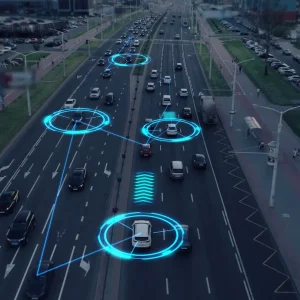Driving while distracted is a key safety issue that is most pressing among those driving at work, according to a new white paper.
The IAM Roadsmart publication ‘Driving While Distracted: Challenges and Solutions’, says that firms need to address the problem urgently, both through professional driver training and by overhauling their driver policies.
It quotes Department for Transport figures showing that in 2017 there were 4,639 casualties due to in-vehicle distractions, and says that on top of the employee safety aspect, fleet operators face higher costs for fines, damages and charges, while at the same time the amount of potentially distracting technology fitted to new cars is seemingly increasing by the day.
The paper states: “Despite the best efforts of legislators, road safety experts, numerous fleet experts, and the never-ending flow of new in-car technology aimed at making us safer, drivers will continue to become distracted as long as they are left in control of their vehicles.
“Nowhere is this challenge more pressing than for those driving for work, who are constantly under time and cost pressures, never more so than today with the rise of the smartphone.
“Human nature means that from time to time even the most determined might inevitably, if momentarily, fail. This must be particularly true for drivers at work, who often spend many hours behind the wheel.”
The paper warns that even for highly-trained drivers, the presence of smartphones, sat-nav systems and increasingly rich in-car entertainment mean it has never been harder to concentrate behind the wheel.
It says: “This is why it is imperative that fleet managers – and their leaders – take a fresh look at professional driver training to ensure that their employees reach the very highest standards – in the best vehicles available.
“This can only succeed if it is fully backed by a thorough company driver policy – a policy that is rigorously enforced and regularly audited, and that results in demonstrably better driver behaviour.”
Among the paper’s recommendations is that businesses should consistently apply a mobile phone policy to address the growing trend of ‘nomophobia’, the fear of being out of mobile phone contact, which is said to be particularly common among business drivers.
On the subject of training, the paper quotes Dr Lisa Dorn, head of the driving research group at Cranfield University, who says it is particularly important for company car drivers, who are most likely to be driving new vehicles fitted with the latest advanced driver assistance systems (ADAS), which they may not be familiar with.
She said: “Fleet managers need to give drivers sufficient training on the behavioural side of ADAS.
“This training should be given before a driver is expected to drive a new vehicle with new systems and functions they have no experience with.
“Fleet managers need to talk to drivers about becoming too trusting of this technology and disengaging from the driving task.”
The paper states that the introduction of ADAS has divided opinion among experts, with some saying they have improved safety, while others warn that drivers are confused and being lulled into a false sense of security.
In defence of ADAS, the paper quotes Colin Grover, principal engineer for automated driving at Thatcham Research, who said it was important to avoid demonising the systems.
He said: “Many ADAS operate in the background, like autonomous emergency braking, which is almost invisible until you need it.
“So not all ADAS add distraction. Not all of it is in your face. It is there to help when needed.
“We shouldn’t forget that ultimately, it all comes down to the will of the individual. People need to be responsible. If they are there to drive a vehicle, they must not allow themselves to be distracted.”
The paper concludes that it is time for businesses to ask themselves some ‘hard questions’ on driver distraction.
“Is this sustainable?” it says. “What is the true, wider impact of this growing pressure on employees in terms of driver performance? How can the balance best be struck between having employees constantly at-hand on their smartphone – and profit? Is our rush to ‘get the job done’ creating a false economy, given the high cost of fuel-use, damage, downtime and collisions?
“Now is the time for businesses to double down on safety at work by taking a fresh look at policies, training, and their effect on those who drive for work.
“Not just for the good of their professional reputation, the safety of their employees and for the good of their bottom line – but also for the good of all road-users everywhere.”





